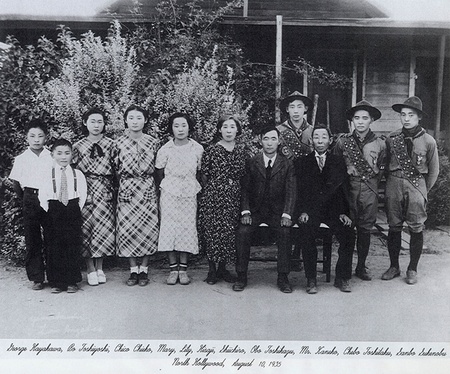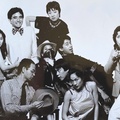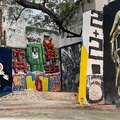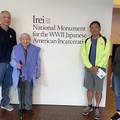After living in this country for thirty-four years and raising seven children, my mother, who was a schoolteacher in Japan before coming to this country, was doing stoop labor. She carried around the ashes of my brother, father, and sister for several years. When she received the government’s token compensation of $1,800 for the family’s losses, it paid for the gravestone under which the three are buried.
—Dr. Mary (Sakaguchi) Oda at Commission Hearings on Wartime Relocation and Internment of Civilians, Los Angeles (1981)
The human story that unfolded in the serene landscape where the desert meets the mountains drew Ansel Adams to Manzanar in 1943. Among the thousands forced to abandon their normal lives, he met individuals with what he termed “solidity of character” and “external cheerfulness” in the face of conditions far beyond their control. “I do not recall one sullen face in Manzanar,” he wrote. Nevertheless, Adams realized that behind the smiling faces lay a darker truth. The story of the Sakaguchi family illustrates the tragic lives captured by his lens.
It was the dream of Issei farmers Shiichiro and Hisaji Sakaguchi that their seven children would grow up to be dentists or doctors—and remarkably, five of them did. But despite the outward success of this talented family, the conditions at Manzanar were to contribute to a series of devastating events. After the Sakaguchis were forced to evacuate in 1942, three family members would die within seven months of each other, and sister Lily would suffer a nervous breakdown.
Before the attack on Pearl Harbor, eldest son Obo was a practicing dentist in Gardena, California, and second son Chebo was a third-year dental student at USC. The third son, Sanbo, graduated from UCLA in 1939 and was in his second year of medical school at Milwaukee’s Marquette University; he escaped incarceration by living outside the military zone. Eldest daughter Chico graduated from UCLA in 1940, while Mary was in her first year at UC School of Medicine at Berkeley. Lily was an undergraduate student at UCLA, and the youngest child, Bo, was in the tenth grade.
As a reaction to the dust storms and winds at Manzanar, Chico developed bronchial asthma. “She never stopped wheezing,” recalls her sister, Dr. Mary (Sakaguchi) Oda, now a retired medical doctor. Chico died at the age of 26 after suffering a severe asthma attack.
Also sensitive to the wind and dust, patriarch Shiichiro eventually developed cancer of the nasal pharynx. “Being a doctor now and looking back,” notes Dr. Sanbo Sakaguchi, “my dad must have had a small tumor in the back of his throat. And because of the dust in camp, I think that stimulated that tumor to grow.”
After his father became ill, Obo transferred to Manzanar from Gila River (Arizona) at his mother’s request, but he soon developed severe abdominal pain. He developed an intestinal obstruction that was diagnosed as stomach cancer, and he passed away at age 32, the third family member to die in 1944.
In the midst of the physical devastation wrought by camp life, the emotional stress finally overtook the family’s youngest daughter. A straight-A student at the University of Utah, Lily was hospitalized after a nervous breakdown. After being treated, she returned to Manzanar, later completing her education at University of Pennsylvania, the first and only family member to graduate from an Ivy League school.
In spite of the tremendous hardships camp inflicted on this brave and gifted family, before he died Shiichiro said that he had no regrets about coming to this country, “because with seven children there is no way I could send them all to college, and five to medical and dental schools, in Japan.”
However, war took its greatest toll on his wife, Hisaji. Her death in 1953 from a heart condition was a tragic conclusion to a life filled with heartache.
Photo: The Sakaguchi Family, North Hollywood, California (August 10, 1935). Left to right: George Hayakawa (close family friend), Bo Toshiyoshi, Chico Chieko, Mary, Lily, Hisaji, Shiichiro, Obo Toshikazu, Mr. Kaneko, Chebo Toshitaku, Sanbo Sukenobu; Obo, Chebo, and Sanbo are in Eagle Scout (highest rank in the Boy Scouts) uniforms. Gift of the Japanese American Medical Association (2005.138)
* This article was originally published in the This article originally appeared in the Winter 2006 issue of the Japanese American National Museum Member Magazine.
© 2006 Japanese American National Museum







